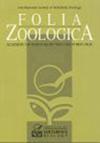自由放养鹿群的产前、产后生长和母性状况
Q2 Agricultural and Biological Sciences
引用次数: 1
摘要
摘要我们研究了喀尔巴阡盆地自由放养栖息地的小鹿(Dama Dama)种群的产前和产后生长速率和母性效应。这项为期五年的研究收集了匈牙利西南部(Lábod地区)12月至狩猎季节结束(2月)的怀孕雌性,5月至6月的新生儿和4-12个月大的小鹿(10月至6月)的数据。目的是分析胎儿生长速度,评估产前生长与母体状况的相互作用,探讨影响出生质量的因素,并测量小鹿生长速度。在研究期间,胎儿体质量(BM)、体长(BL)和头长(HL)呈乙状形生长。BM、BL、HL 3个特征的相关性(rP)在0.78 ~ 0.93之间。胎儿体重是胎儿体重的二次函数。胎儿BM与母体肾脂肪指数(KFI)和体重呈线性负相关。雄鼠平均出生质量(4.66 kg)大于母鼠(4.31 kg),且在小鹿期中期(6月中旬)大于小鹿期初期(5月)。小鹿的BM和KFI在冬末(2月,8月龄)下降,之后上升。小鹿的生长分析总体上显示雄性比雌性更重、更大;然而,并不是在所有情况下都清楚地表现出来。本文章由计算机程序翻译,如有差异,请以英文原文为准。
Pre-, postnatal growth and maternal condition in a free ranging fallow deer population
Abstract.
We studied prenatal and postnatal growth rates and maternal effects in fallow deer (Dama dama) populations in free-ranging habitats in the Carpathian Basin. Data in this five-year long study were collected from pregnant females from December to the end of the hunting season (February), from newborns (May-June) and from 4–12 months-old fawns (October-June) in southwestern Hungary (Lábod region). The aims were to analyze foetal growth rate, assess the interaction between prenatal growth and maternal condition, and to examine factors influencing birth mass, and to measure fawn growth rates. During the study period foetal body mass (BM), body length (BL) and head length (HL) showed sigmoid growth. Correlations (rP) among the three features (BM, BL and HL) ranged from 0.78 to 0.93. Foetal BM was a quadratic function of foetal BL in both sexes. Foetal BM was linearly and negatively related to maternal kidney-fat-index (KFI) and body mass. Average birth mass was greater in males (4.66 kg) than females (4.31 kg), and it was greater in the middle of the fawning season (in the middle of June) than in the beginning (in May). The BM and the KFI of the fawns decreased at the end of the winter (February, eight months of age) but increased thereafter. The growth analysis of fawns generally showed that males compared with the females were heavier and larger; however it was not manifested clearly in all cases.
求助全文
通过发布文献求助,成功后即可免费获取论文全文。
去求助
来源期刊

Folia Zoologica
生物-动物学
CiteScore
1.70
自引率
0.00%
发文量
0
审稿时长
3 months
期刊介绍:
Information not localized
 求助内容:
求助内容: 应助结果提醒方式:
应助结果提醒方式:


